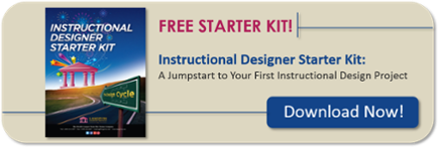Photo by: AndreyPopov via Canva
While the hybrid model, which combines remote and in-person work, is now widely adopted in many organizations, it introduces unique challenges to employee training and development. If you’re an instructional designer, the pressure is on you to create equitable, engaging learning experiences for everyone, regardless of where they are located.
As instructional designers, we must acknowledge that designing hybrid training requires a shift in mindset. Let’s take a closer look at two essential areas where most hybrid training fails—technology and performance-based practice.
Hybrid training isn’t as simple as streaming the classroom to remote learners. You need the right tech setup and a plan for using it well. This includes:
- Classrooms equipped with projectors, interactive whiteboards, and reliable AV systems.
- A virtual platform with breakout rooms, chat, polls, and app-sharing features.
- Technology that allows seamless interaction between remote and in-person learners—not just visibility.
Think of your tech as the foundation for connection. If one group can’t hear, see, or participate effectively, the whole learning experience breaks down.
Once your infrastructure is in place, the next step is designing practice that works for everyone. The goal? Make the remote participant feel just as immersed in the learning as the participant sitting in the physical classroom.
- Breakout Sessions – If remote and in-person learners can’t collaborate easily, consider using virtual breakout rooms where remote learners can work on similar tasks with peers. Pair in-person learners for parallel activities to maintain engagement.
- Simulated or Asynchronous Practice – Provide digital simulations, screen recordings, or interactive modules that allow remote and in-person learners to practice tasks at their own pace. The facilitator provides support to each group as needed.
- Dual-Facilitated Exercises – Assign a co-facilitator to engage remote learners separately while the facilitator works with in-person learners. This ensures both groups receive guided support during practice.
When you design flexible practice opportunities, hybrid training can be just as effective as in-person or fully remote sessions. The trick is to create engaging experiences that work for both groups without sacrificing learning outcomes.
Designing training for a hybrid environment requires a strategic approach and the skills to navigate a variety of challenges. In our Designing Training for a Hybrid Workforce workshop, you’ll walk away with ready-to-use tools, real-world examples, and the confidence to make every learner feel seen and supported—no matter where they’re located.


